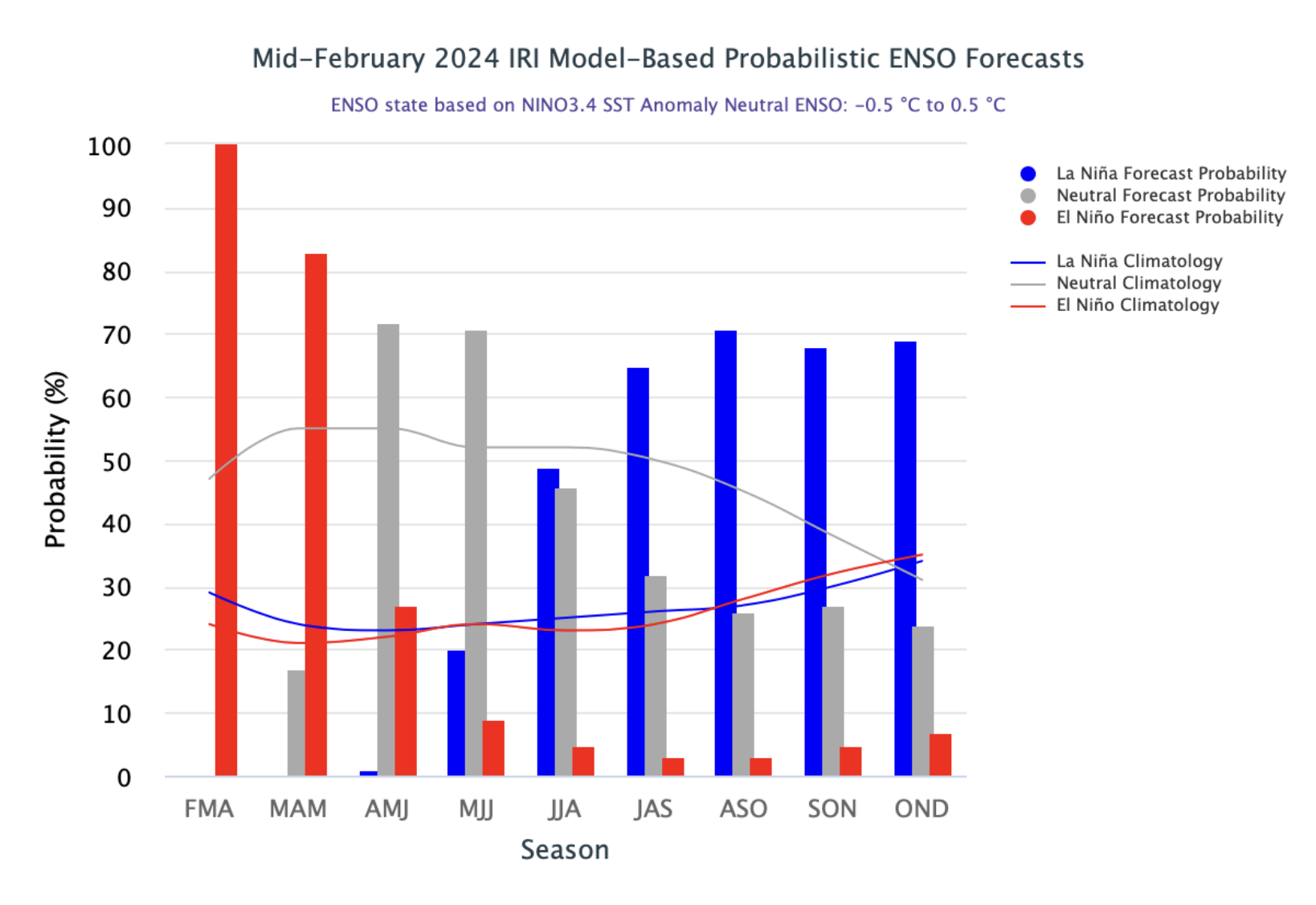Method:
A non-homogeneous hidden Markov model is used with monthly SST data (Rojo Hernández et al., 2020) to objectively classify spatial patterns of SST and their temporal dynamics, for the Tropical Pacific Ocean, the Global Tropics, and all oceans. These are separate models and lead to somewhat different spatial patterns being identified even for the same ocean, depending on the model structure. A hidden state or latent variable is identified with each spatial SST pattern, and there is a probabilistic model for the transition from one state to the next. See below for a classification of ENSO states using data from 1856 to 2023 for the tropical Pacific Ocean. The model can then be used to predict the probability of a future hidden state month by month, over the next 18 months. It can also be used to generate continuous simulations of the SST to support risk analysis.
ENSO Classification:

Forecasts:




